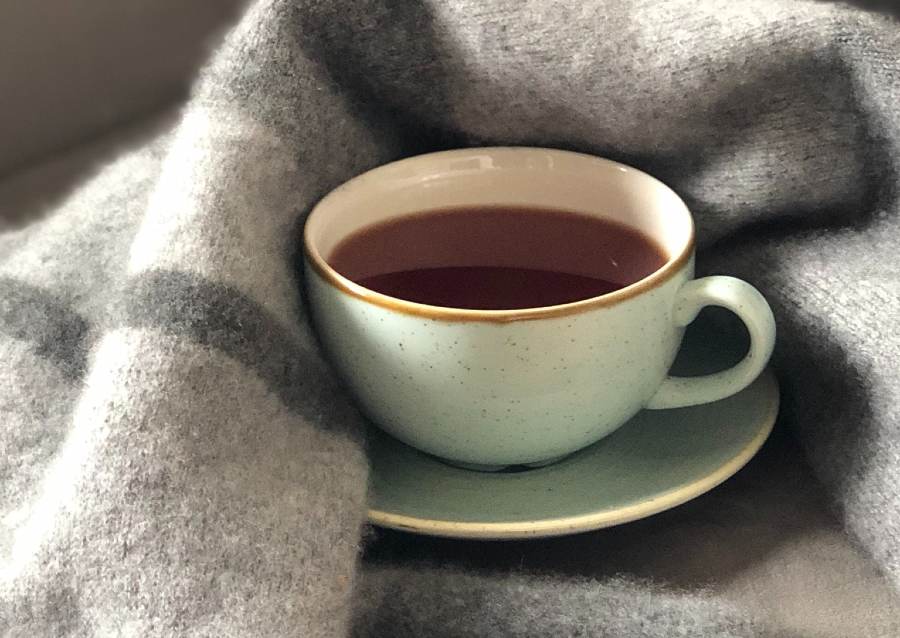
Is there such a thing as a universally accepted size of a cup of coffee? Perhaps the best way to answer this question is by first looking at why it’s important to know the size of your cup of coffee.
There are several benefits of knowing how many ounces are in a coffee cup:
- you are able to decide how much water and coffee beans to use to make a great cup of coffee using the golden ratio
- it helps you to estimate how much caffeine is in the cup
- you are able to determine how much coffee (in ounces) to expect when brewing with a carafe coffee maker such as the French press or a drip coffee maker
A coffee carafe is measured in coffee cups and usually gets its name from the number of cups that fill it. For example, an 8-cup carafe means that it has a maximum capacity of eight coffee cups.
Similarly, the carafe’s name extends to the coffee maker that brews it. This means that you can tell the maximum number of cups that a carafe coffee maker can brew in one cycle from its name. For example, the Cuisinart Brew Central 12-Cup coffee maker brews a maximum of 12 coffee cups per cycle.
However, if you are used to brewing carafe coffee, you might have realized that your homebrewer seems to fill fewer cups when drinking from standard coffee mugs.
So, How Many Ounces are in a Cup of Coffee?
A coffee cup is 4-6 fluid ounces as opposed to eight ounces in a standard (metric) cup.
There are two reasons for the 4-6 oz range
- the coffee golden ratio refers to 6 oz of water so, over the years, coffee lovers have assumed that the standard size for a coffee cup is six ounces
- home brewers size their carafes using 4 or 5 fl oz cups. For example, Cuisinart uses 5 fl oz cups as the standard measure for their carafes. So a 12-cup Cuisinart carafe holds 12 five-ounce cups of coffee
However, most people prefer drinking coffee from large coffee cups.
Understanding the Size of Your Coffee Carafe (How Many Ounces Per Cup)
Unfortunately, there is no standard coffee cup size for homebrewers so there is no uniformity when it comes to the size of cups in different brands of coffee carafes.
Coffee carafes come in different sizes and are usually calibrated using the number of cups that they can hold. For example, Chemex carafes are available in 3-cup, 6-cup, 8-cup, 10-cup, and 13-cup sizes.
Most coffee pots, especially glass carafes have cup measurements marked on the wall of the pot. However, information about the volumetric size or how much coffee is in a single cup is hard to find.
If a manufacturer has indicated the volumetric size of the carafe, you can divide the total volume by the total number of cups that the carafe can hold to find the amount of coffee in a single cup.
For example, for a 12-cup carafe that measures 60 fl oz, divide 60 by 12 to find that the coffee pot is measured using a 5 oz cup.
If your coffee maker only provides information about the number of cups that the carafe can hold, you may use a measuring cup to establish the total volume of the carafe in ounces or liters.
Here is a table showing the ounces per cup in popular brands of coffee carafes.
| Coffee Carafe Brand | Ounces per Cup |
|---|---|
| Chemex | 5 |
| Black and Decker | 4 |
| Cuisinart | 5 |
| Hamilton Beach | 5 |
| Ninja | 5 |
| Mr. Coffee | 5 |
| Bunn | 5 |
| Keurig | 5 |
| Krups | 5 |
| Technivorm Moccamaster | 4 |
| Capresso | 5 |
| Zojirushi | 5 |
| Oxo Brew | 5 |
| Bodum Pour-over | 4 |
| Bodum French Press | 4 |
From the chart above, it is evident that coffee carafes are measured using smaller cups than what most people use. Consequently, when using bigger mugs such as 10 oz mugs, a 12-cup coffee maker will yield 5 cups only.
Similarly, brewing two cups in a carafe that is measured using 4 oz cups will not fill a 10 oz mug.
For Single-serve coffee makers, there is no ambiguity as to the cup size as there is usually a function to select the desired size. However, the smallest cup option on most single-serve brands is 6 oz which further cements the view that most people prefer bigger cups of coffee.
Why it is Important to Know the Capacity of a Coffee Carafe
The capacity of a carafe is an important factor when buying a carafe coffee maker. Obviously, a big carafe is suitable for larger groups of coffee drinkers.
You are also able to determine the grams of coffee required to brew a full carafe.
What is the Most Preferred Size of Coffee Cup?
A 2020 study found that the standard coffee mug in the United States is 12-16 oz as over 50 percent of the coffee drinkers in the US prefer these sizes.
Let’s face it, coffee cups below 8 fl oz are too small for most people. Americans, in particular, prefer large, informal coffee mugs. Even fast-food coffee brands such as Starbucks and Dunkin Donuts do not have coffee cups smaller than 8 oz and 12 oz respectively, apart from the tiny espresso cups.
With the growing travel mug culture, more Single-cup coffee makers are providing the capability to brew a travel mug size in one cycle. Single-serve coffee makers that do not have a specific travel mug brewing option such as Keurig are capable of brewing successive single cups to fill a travel mug.
Around the world, coffee cups vary in size depending on the region and culture. For example, in the Balkans, Middle East, and Ethiopia, coffee was historically served in small 2-3 ounce customary cups. The standard dine-in coffee cup in the UK is 200 ml and 160- 200 ml in Australia.
However, with the fast-food coffee culture which uses large mugs spreading across the world, bigger, American-style mugs are gradually being adopted in numerous countries.
As per the metric system, metric cups also vary in size from country to country. A regular cup in America, for instance, is 8 fl oz (240 ml) whereas, in Japan, a regular cup is 6.7 fl oz (200 ml). In Australia, the standard cup size is 8.4 fl oz (250 ml).
How the Type of Coffee affects the Size of Cup
The type of coffee dictates the type and size of the drinking cup. Strong coffee such as espresso is served in tiny cups as it has a high caffeine ratio per ounce.
Coffee drinks with milk and milk substitutes such as lattes are usually served in large mugs to accommodate the add-ons. Coffee shops that prioritize latte art use special, wide-mouthed latte or cappuccino cups.
Here is an article that discusses the best coffee mug materials including the advantages and disadvantages of each material.
Some coffee shops such as Starbucks serve iced coffee drinks in bigger cups to account for the volume that is taken up by ice.
Why Is a Cup of Coffee Defined as Six Ounces?
A cup of coffee is defined as six ounces largely because the National Coffee Association recommends a coffee ratio of 1-2 tablespoons of ground coffee per six ounces of water for the perfect brew. Consequently, it’s widely assumed that a coffee cup is six ounces.
However, some coffee recipes wrongly translate the recommended coffee ratio to 1-2 tablespoons of coffee grounds per cup of coffee (which is ambiguous) instead of stating the water ratio as either six ounces of water or a 6-ounce cup of water. Such brewing guides are common when you purchase pre-ground coffee.
Generally, when you make coffee, the coffee yield is less than the water input as some water is absorbed by the coffee grinds. Some coffee brewing methods may also experience higher rates of evaporation than others.
Wrap up
On average, there are 4-6 fluid ounces in a cup of coffee, by American standards. Coffee carafes are usually calibrated using 4-6 oz cups. However, most people drink their coffee from bigger cups with over 50 percent of American coffee lovers preferring 12-16 oz mugs.
When brewing coffee with a carafe coffee maker, you may want to consider the size of your cup to avoid brewing a half cup.

